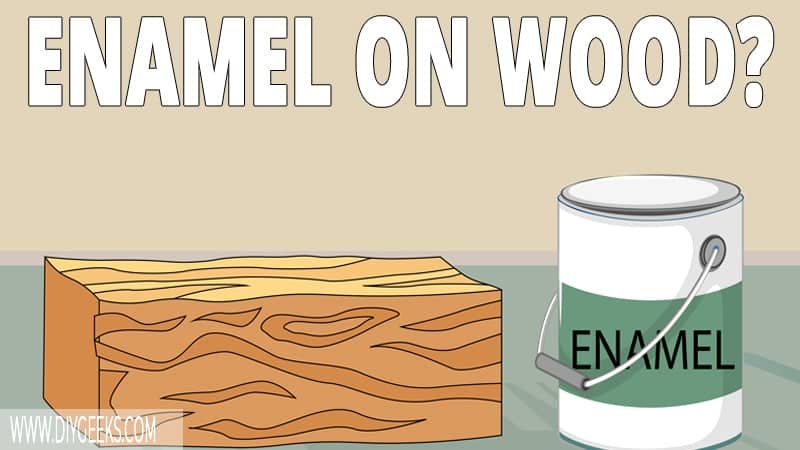Enamel paint is oil-based and is known for its thick flow and colorful finish. Unsealed enamel paint lasts around 5 years over the interior surface and 1 year over the exterior wooden surface.
To apply enamel paint over wood, sand the wood, apply primer, sand the wood (again), and apply enamel paint.
You can use enamel paint on wood to create a glossy, durable, and colorful finish. However, the wooden surface must be clean and sanded before you apply the paint.
How Long Does Enamel Paint Last on Wood?
Unsealed enamel paint lasts around 5 years on indoor wood surfaces and around 1 year on outdoor surfaces. Sealed enamel paint will last around 10 years on indoor surfaces and around 5-7 years on outdoor surfaces.
The durability of the finish depends on the surface condition, where the material is placed, and the quality of the sealer.
Enamel paint lasts longer indoors as its finish won’t be exposed to constant water or weather elements. Outdoor paint finishes are exposed to weather elements (rain, sun) and will last shorter.
Enamel paint is more durable and easier to maintain compared to other paints. You can clean it often with water without removing the finish as it has minimal water-resistant features.
Related Read: Can You Use Metal Paint on Wood?
Can You Apply Enamel Paint over Varnished Wood?
You can’t apply enamel paint over varnished wood unless you sand or remove the varnish top layer first. Varnish is a glossy moisture-resistant sealer that prevents paints from sticking over it.
You can sand the varnish finish with medium or coarse-grit sandpaper to remove parts of it or remove the entire finish with a paint-stripping compound so the paint can penetrate the surface.
Sanding will create tiny pores (holes) in the finish that allow the paint to penetrate and stick over these pores. Apply one (1) coat of primer before enamel paint.
Can You Apply Metal Enamel Paint On Wood?
You can apply metal enamel paint on wood. Metal enamel paint has the same formula as standard enamel paint, it just has additional rust protection additives.
The rust protection additives prevent metal surfaces from getting oxidized and won’t do harm to wooden surfaces.
However, you can’t use wood enamel paint on metal surfaces as it doesn’t have rust protection additives.
How To Apply Enamel Paint To Wood?
To apply enamel paint to wood, do the following things.
- Sand the Wood.
- Apply Primer.
- Sand the Wood (Again).
- Apply Enamel Paint.
1. Sand the Wood
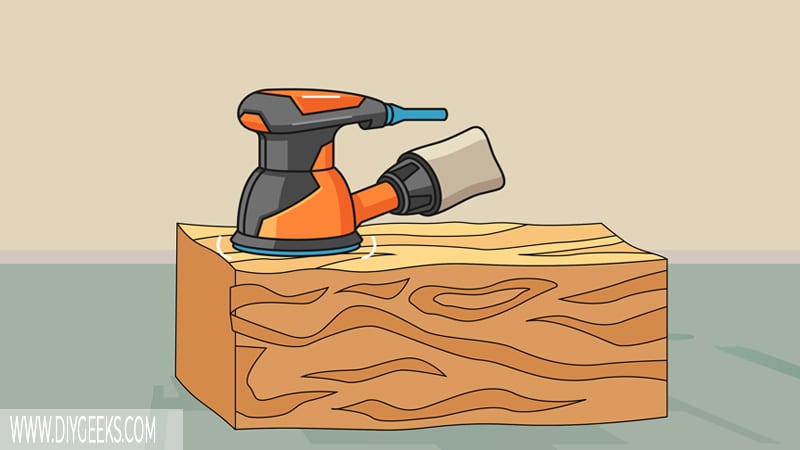
Sanding wood will remove imperfections and bumps from the surface and help the paint adhere better. Sand wood with medium-grit sandpaper (100-grit) and finish it with fine-grit sandpaper (220-grit).
Medium-grit sandpaper (100-grit) will remove the imperfections and the previous finish (if any), while the fine-grit sandpaper (220-grit) will smoothen out the surface.
Clean the surface after sanding with microfiber tack to remove dust and debris.
2. Apply Primer
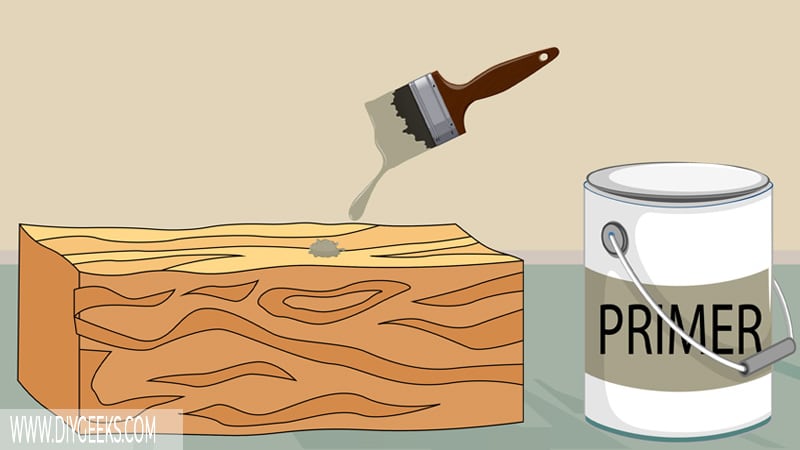
A primer coating will cover imperfections and fill holes and cracks, providing a smooth base coat (layer) for the paint to stick to. It helps the paint to stick better and produce a smooth finish.
Apply 2 coats of primer using a brush, roller, or sprayer. Wait until one coat dries before applying the next one.
3. Sand the Wood (Again)
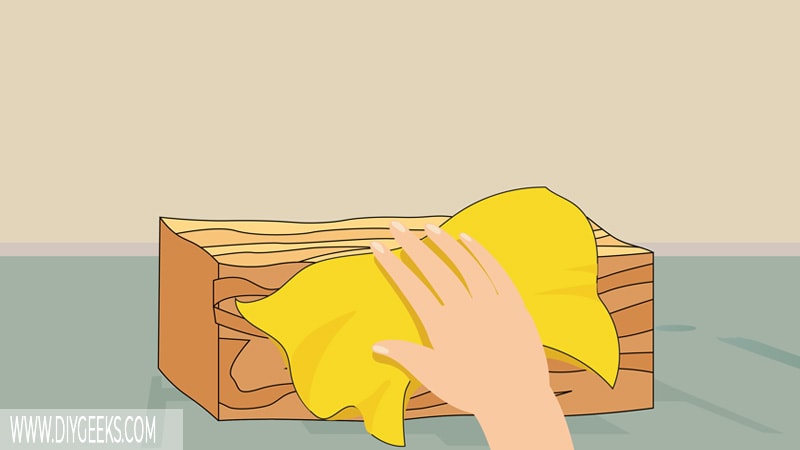
Sand the wood after the second primer coat with extra fine-grit sandpaper (440-grit) to remove any imperfections from the primer coating.
Re-clean the wood with tack to remove dust or debris.
4. Apply Enamel Paint
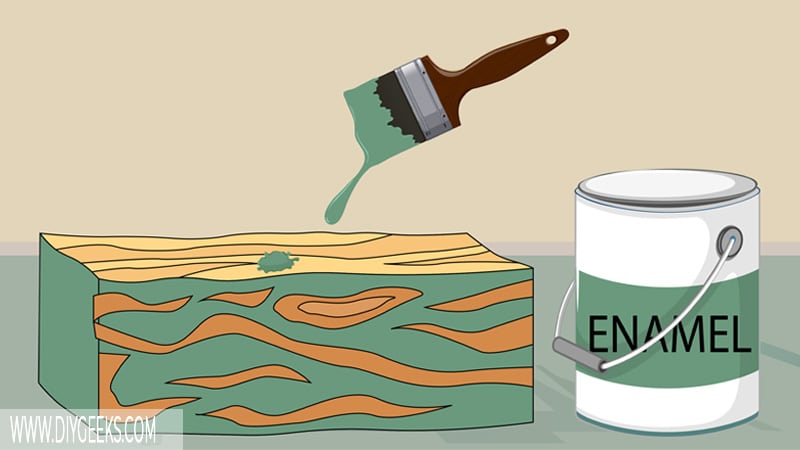
To apply enamel, use a brush, roller, or sprayer. Apply 2-3 coats, but avoid applying thick coats as wood can’t absorb them.
After the final coating dries, seal the finish with a sealer, such as polyurethane, to increase its durability.
Related Read: Can You Use Enamel Paint on Plastic?
[sc name=”enamel-on-wood”][/sc]
